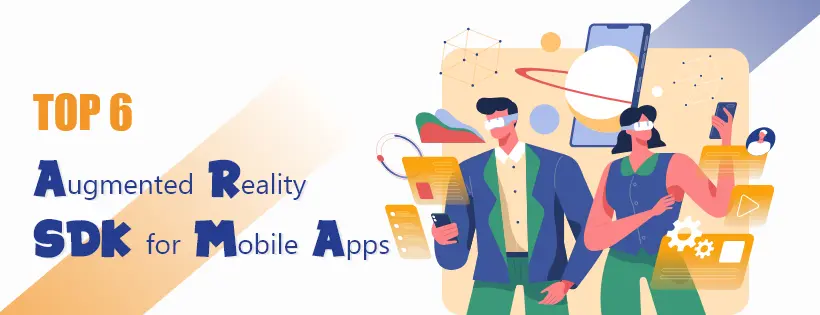An augmented reality SDK software development kit, or AR SDK, allows developers to create digital objects to blend into the real world. An AR SDK is crucial for any business that creates AR experiences. These tools offer following functions which allow developers to produce digital images:
- 3D object tracking
- Image recognition
- Visual SLAM (simultaneous localization and mapping)
- Multi-tracking
AR engineers can utilize these SDKs to develop mobile apps, build various CAD platforms, deliver a unique marketing experiences, and much more. These SDKs are typically intended for specific frameworks and hardware; however, some AR SDKs can be supported across multiple systems, creating more flexibility.
What are the key benefits of AR SDK Software:
- Speeds up development time by providing the necessary framework to create AR applications
- Provides integration with a variety of operating systems
- Allows beginners to get acquainted with AR development through a simple development interface
Top 6 Augmented Reality SDK for Mobile Apps
ARKit:
ARKit is the AR framework created by Apple. It has been developed in Objective-C and integrated into the iOS and iPadOS systems. It’s can be used by video game creators because ARKit offers a library that supports both Apple’s native API for 3D graphics SceneKit and lower-level native API Metal. It’s also compatible with third-party libraries such as Unreal Engine or Unity IDE.
Moreover, there have been multiple modifications since the first version of ARKit. In its first version, everything was based on the detection of horizontal surfaces such as tables or floors, where the accumulation of function points in such areas pretty much granted the detection of such surfaces. ARKit 1.5 brought reference images and the detection of vertical surfaces. Later on, ARKit 2.0 introduced general improvements regarding performance and also added shared experiences. The ARKit 3.0 version incorporated the occlusion of people so that virtual objects located behind people would not overlap the people in front of them.
ARCore:
ARCore is a platform designed by Google that benefits from several APIs that allow our smartphones to recognize, analyze, and interact with our environment. It is for developers who want to address the development of Android Augmented Reality apps and iPhone Augmented Reality apps in a much easier way since it supports multiple platforms. And the primary reason for this is because it is capable of detecting elements such as movement, size, and location of different horizontal, vertical, and angled surfaces, as well as estimating the light conditions of the place where the user is.
Vuforia Engine:
Vuforia Engine is the leading augmented reality software solution that’s been chosen by over half a million registered developers worldwide. By bringing together powerful computer vision, dynamic features, and easy-to-use software tools Vuforia Engine enables developers to create sophisticated, branded AR experiences. With the widest range of supported devices on the market, Vuforia ensures your application will reach the broadest audience possible.
ZapWorks:
ZapWorks is ideal for both designers and developers who want to push the boundaries of creativity and storytelling without getting involved in coding. Using the ZapWorks ecosystem, they can rapidly build, instantly publish, analyze and scale immersive AR experiences across the complete customer journey. ZapWorks offers a complete toolkit for brands and agencies that want to create fully-customizable AR experiences across print, product, packaging, retail, advertising, and much more.
Kudan:
Kudan is one of the most useful augmented reality development libraries since it is fast and allows object recognition with posters or stickers. Kudan works by adding a layer on top of the real objects. It’s the best fit for independent projects, which usually rely on crowdfunding and start-ups working with the main augmented reality development kits. Besides, it also offers business licenses with additional available features.
Wikitude:
Wikitude SDK is an all-in-one Android and iOS Augmented Reality framework that enables developers to use geolocation data, create 3D objects, and implement image recognition. It gives access to a myriad of functions that are not available in open-source libraries that helps in saving time and money in the long term.
Undoubtedly, Augment Reality is ruling the market, so if you have a business requirement, get in touch with us. Our team of experts will offer Augmented Reality application developers that will offer you the best-customized solutions that work for your business.
For more information visit: https://a2consultingllc.com/

